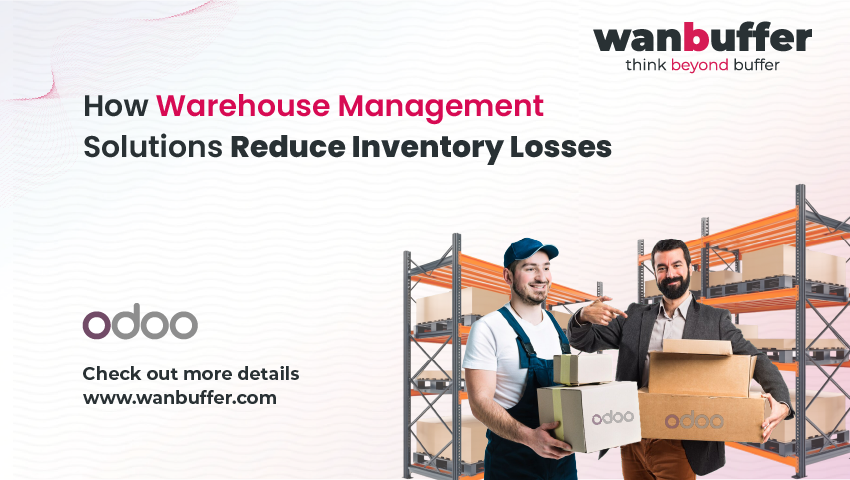
Table of Contents
1. Introduction
In today’s fast-moving supply chain environment, inventory losses can severely impact a company’s profitability. Shrinkage, misplacements, theft, and human errors contribute to millions of dollars in annual losses across industries.
However, businesses are now turning to Warehouse Management Solutions (WMS) to combat these challenges. A modern WMS not only organizes inventory but also minimizes losses through automation, real-time tracking, and smarter operations.
2. Common Causes of Inventory Loss
Before understanding how WMS can help, it’s essential to know where businesses typically lose inventory:
- Theft: Both external theft (burglary) and internal theft (employee misconduct).
- Misplacement: Poor organization leads to lost items within the warehouse.
- Human Error: Manual record-keeping often results in counting and entry mistakes.
- Damage: Improper storage and handling practices can destroy valuable inventory.
- Stock Discrepancies: Lack of real-time updates causes mismatches between system and actual stock.
Without proper oversight, these factors drain resources and reduce customer satisfaction.
3. The Role of Warehouse Management Solutions (WMS)
A Warehouse Management Solution acts as the digital brain behind efficient warehouse operations. It ensures:
- Accurate inventory counts
- Real-time stock updates
- Traceability of goods movement
- Optimized storage and retrieval
- Early detection of anomalies or discrepancies
By automating key tasks and offering data-driven insights, WMS solutions play a critical role in reducing inventory-related losses.
4. Key Features That Help Prevent Inventory Loss
Leading WMS platforms offer a range of features designed specifically to tackle loss and inefficiencies:
- Barcode and RFID Scanning: Every item is tracked at every stage, reducing manual errors and theft.
- Real-Time Inventory Visibility: Know exactly where each product is located within the warehouse.
- Automated Reordering Alerts: Prevent stockouts and overstocking by triggering purchase orders at optimal times.
- Access Control and User Permissions: Limit and monitor who can access high-value inventory zones.
- Cycle Counting and Audits: Continuous inventory audits ensure that discrepancies are detected early.
- Damage Reporting: Systems log any damages immediately, allowing timely action and accountability.
By leveraging these tools, businesses safeguard their inventory and build more resilient operations.
Learn how to transform your warehouse operations with WMS and Odoo.
5. Business Benefits of Implementing a WMS
Apart from reducing inventory losses, a good WMS delivers multiple business advantages:
- Cost Savings: Lower shrinkage rates mean higher profit margins.
- Improved Order Accuracy: Fulfill customer orders faster and with fewer mistakes.
- Better Labor Management: Optimize workforce utilization with directed picking and task management.
- Enhanced Customer Satisfaction: Deliver products on time and as promised, boosting customer loyalty.
- Data-Driven Decision Making: Utilize warehouse analytics to improve stock handling strategies.
6. Real-World Success Stories
Many businesses across industries have experienced remarkable improvements with WMS:
- Retail Chains: Reduced inventory shrinkage by 25% within six months after WMS implementation.
- E-commerce Startups: Improved picking accuracy by 40%, leading to fewer returns and refunds.
- Manufacturers: Achieved 99% inventory accuracy, enabling better production planning.
Regardless of company size or industry, the right WMS can unlock massive value.
7. Conclusion
Inventory loss is a hidden cost that businesses can no longer afford to ignore. With the rise of modern Warehouse Management Solutions, companies now have powerful tools to control, protect, and maximize their inventory investments.
By investing in a smart WMS, businesses not only reduce losses but also streamline operations, improve customer satisfaction, and drive sustainable growth.
Ready to safeguard your inventory? Contact Wan Buffer Services today to find the perfect Warehouse Management Solution tailored to your needs.
8. FAQs
-
Is a Warehouse Management System (WMS) suitable for small businesses?
Yes! Modern WMS solutions are scalable and customizable, making them ideal for both small warehouses and large operations.
-
How quickly can a business see results after implementing a WMS?
Most businesses notice improvements in inventory accuracy, order fulfillment speed, and loss reduction within the first 3–6 months.
-
Can WMS integrate with existing ERP systems like Odoo or SAP?
Absolutely. Leading WMS platforms offer seamless integrations with popular ERP systems, allowing centralized management across operations.

